So yes, last week’s puzzler is a very cool insect! It is a caterpillar of a butterfly called a Spicebush Swallowtail, Papilio troilus, which makes sense since the caterpillar feeds exclusively on the leaves of the Spicebush. By the way, if you’ve never smelled a crushed leaf of the tree Spicebush, you should try it next time you are out in the forest. It smells like lemon, or as the kids I used to work with always said, “fruitloops!” Either way, it is a heavenly smell.
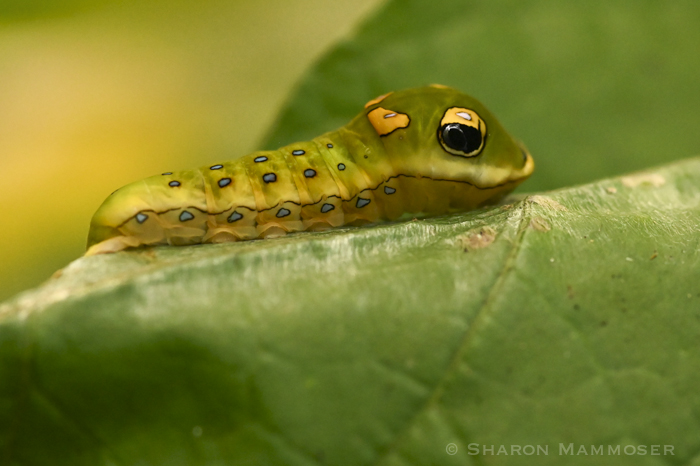
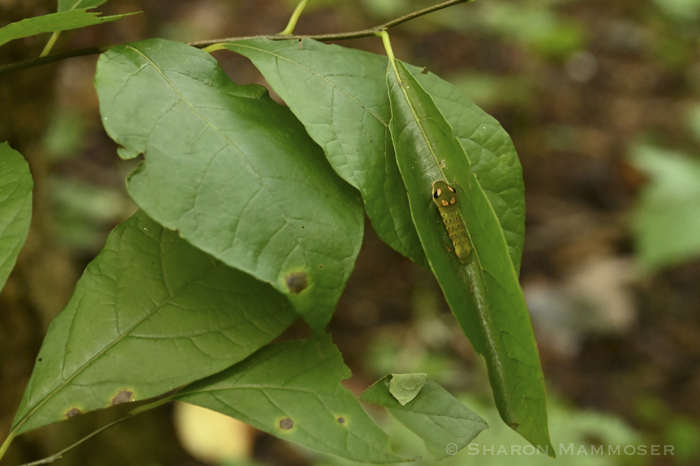
Not sure if you know much about caterpillars but here’s a few things you might not know:
Caterpillars as you likely know, turn into butterflies or moths. They begin life as an egg and then hatch into a caterpillar which is a stage of their life, and one that looks a LOT different than their adult stage. Caterpillars have three pairs of true legs (like their adult counterparts) and usually four pairs of what are called prolegs. These look like legs and aid the caterpillar in gripping surfaces and moving, but they aren’t true legs, and will disappear after the caterpillar goes through metamorphosis.
Do you like songbirds? Do you enjoy watching them in your yard and at your feeders?
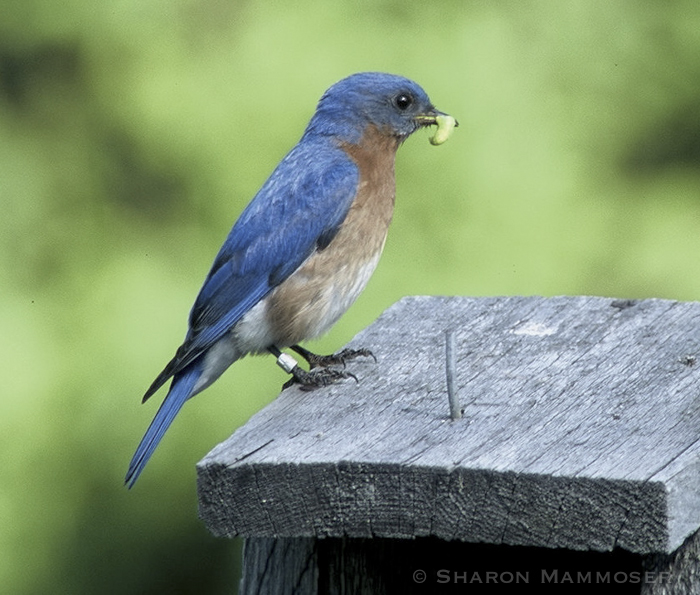
Well then you should know that caterpillars are a super important food source for nesting songbirds. In fact, caterpillars are the go-to grub for most songbirds when they are raising babies. Without caterpillars the forest would look and sound a lot different. Caterpillars are essential in the food web and lots of animals eat them.
Caterpillars are eating machines! Their sole job is to eat, eat some more, and then eat a bit more (and of course poop! A caterpillar’s poop is called frass.)
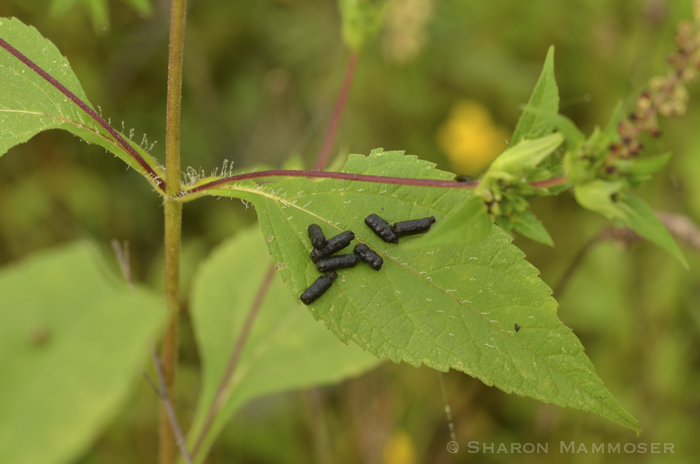
A caterpillar may increase its body mass by more than 1000 times in only a couple of weeks! Some caterpillars are generalists about what they eat and some, like the Monarch with Milkweed, or the Spicebush Swallowtail with Spicebush, need a specific host plant and can only feed on that one kind of plant. If they don’t find THAT plant, they will not survive. When the caterpillars eat too much to fit into their body anymore they shed, or molt, their skin to get larger. These stages between skin sheddings are called instars and depending on the species of moth or butterfly, they may go through 5 or 6 instars before they will be ready for the pupal stage, their final stage before becoming a winged insect.
Ever wonder how butterflies or moths make it through winter? Well, it depends on the species –some overwinter as eggs, others spend the winter as a caterpillar, usually in the soil or leaf litter, some overwinter as a cocoon or chrysalis and some, like Mourning Cloaks, spend the winter in their adult form. In order to do this they go into a suspended phase of development called Diapause. This is like hibernation, only for insects. And some, like the Monarch or Painted Lady, migrate to warmer climates.
Caterpillars employ all sorts of tactics to avoid being found and eaten, from horns, to stinging hairs or bright colors, to mimicry of bird poop, sticks, snakes, or even having fake eyes. Some have amazing camouflage. The Spicebush Swallowtail is fantastic because it uses several different adaptations throughout its life as a caterpillar. After it emerges from the egg, it resembles bird poop.
Check it out here:
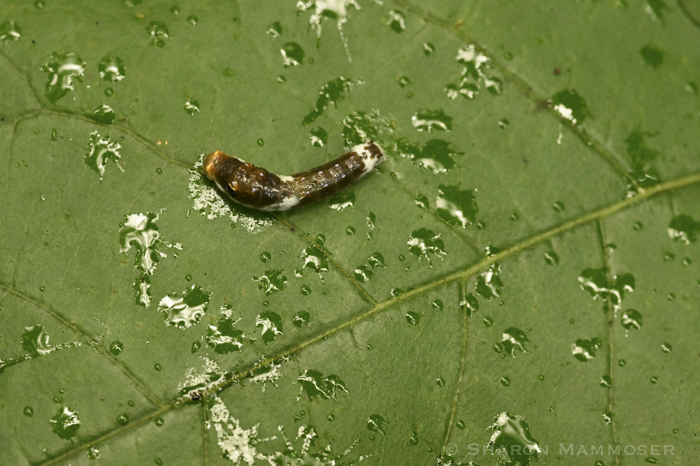

Then, after it grows a few more times and molts, it eventually looks like this:
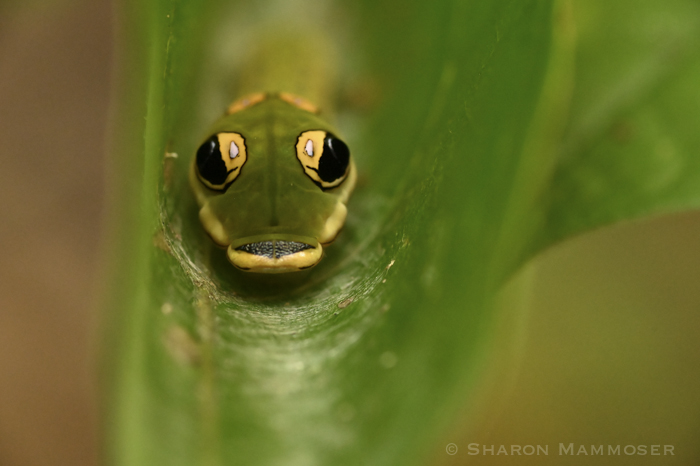
If you were a bird looking for something to feed your growing baby birds, you might see this and pass it up thinking it is a snake! In its last instar before metamorphosis, the Spicebush Swallowtail caterpillar looks like this. Notice how real the “eyes” look, with the small white spots in them and the black line towards the center! And how about that “mouth?” Amazing, right? Now you can see why I was so excited to find this!
Spicebush Swallowtail caterpillars will overwinter in their chrysalis stage. I hope to be able to find “mine” and watch it emerge in the spring.
Here’s what the adult butterfly looks like:
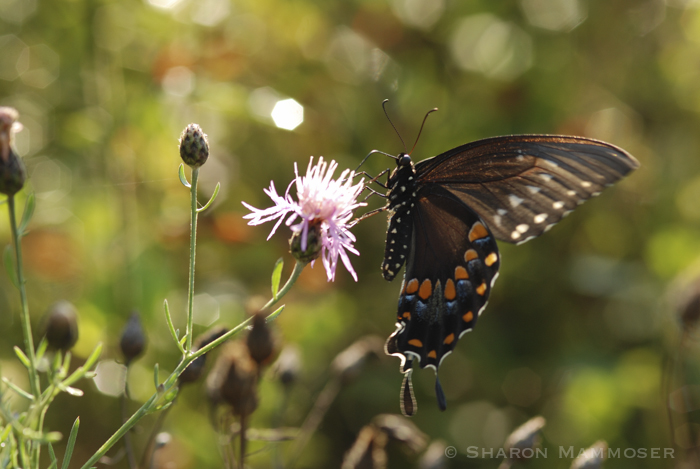
Well I hope you learned something about caterpillars and maybe one day you’ll get to see some of these cool things for yourselves. The best way to find them is to look on leaves, especially when you see evidence of feeding on the leaves or obvious frass. Good luck! And please do drop me a note if you find something worth sharing; I’d love to hear from you!
Want to check out another caterpillar with fake eyes? I did a puzzler way back, several years ago: You can see it here! It’s almost as cool as the Spicebush Swallowtail!
Ready for another puzzler? It’s another beautiful butterfly–an orange and black beauty that you probably see in your garden.

